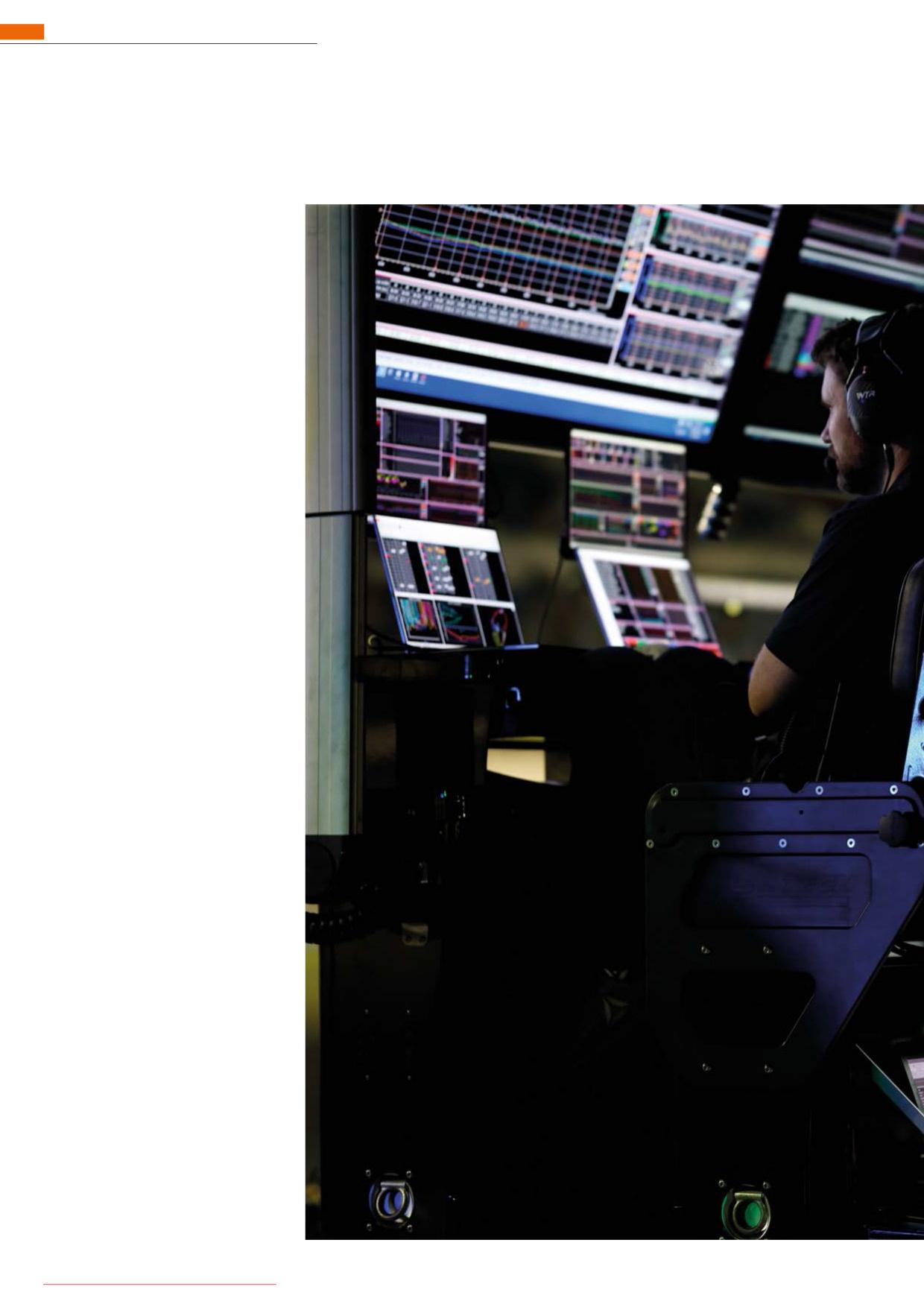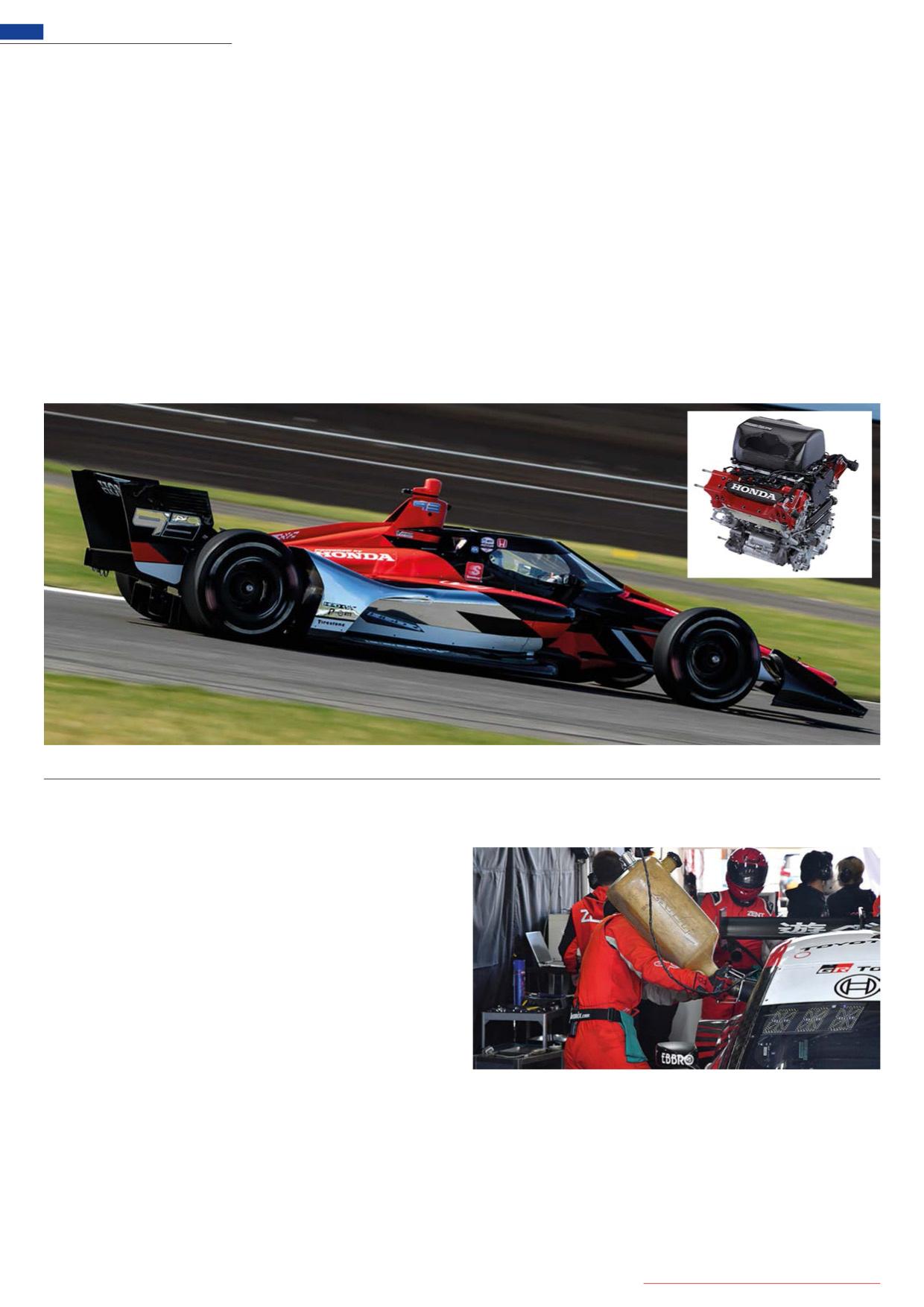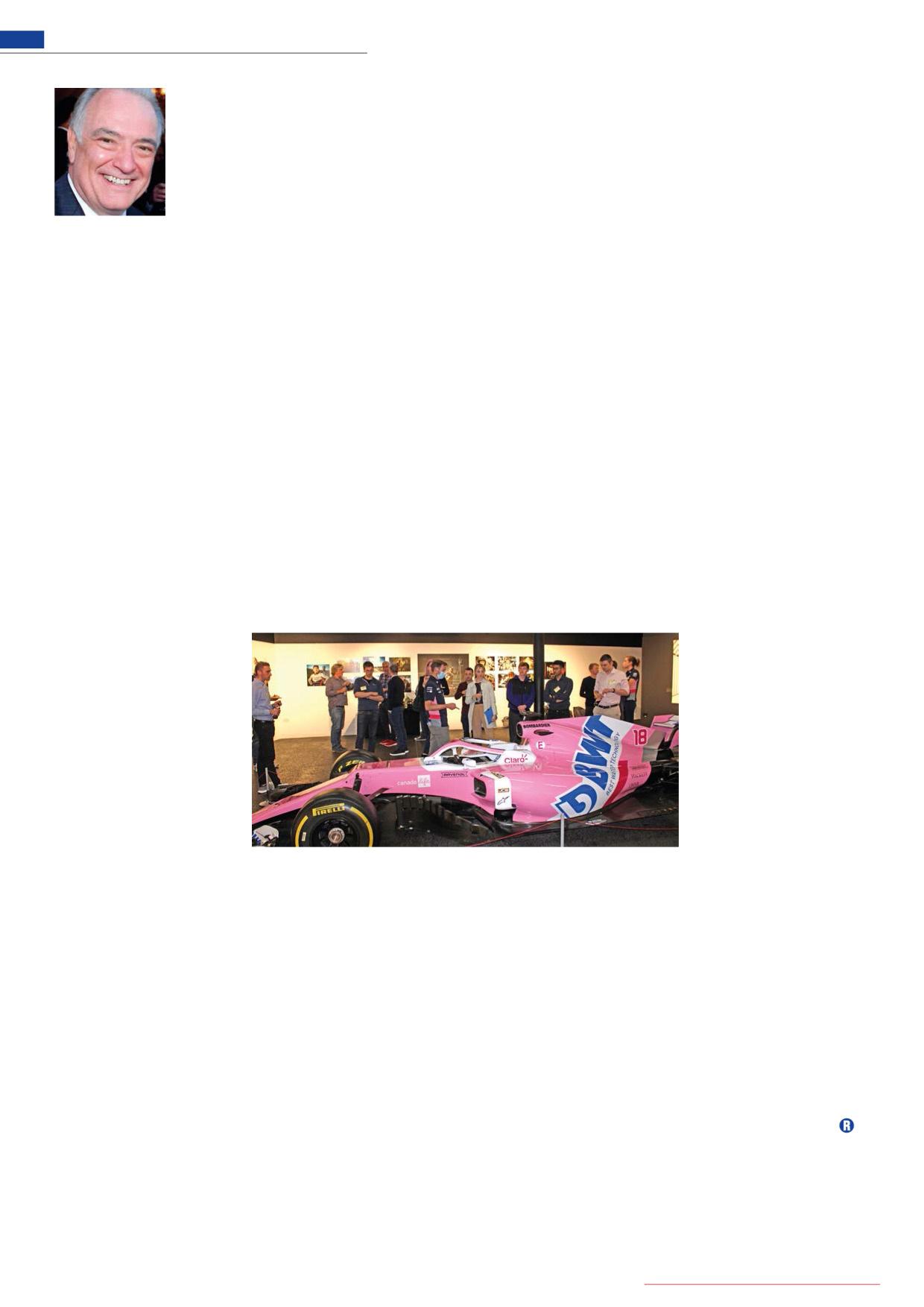
14 minute read
David Salters interview
HPD built an all-new engine for its ARX-061 LMDh Prototype. The company’s president and technical director, David Salters, gave Racecar the lowdown
By ANDREW COTTON
Advertisement
When Honda decided to continue its endurance racing programme in the US, it pulled a clean sheet of paper from the drawer on which to work. ORECA was designing an all-new prototype for the regulations and Honda Performance Development (HPD) wanted to continue its relationship with the French manufacturer.
There were options for the Californiabased company to re-use certain key elements, such as the 3.5-litre, twin-turbo engine it already had, which would undoubtedly have saved money, but with the president of the company also being the technical director, and with a reputation for innovation in racing that is enjoyed by Honda, the company embarked on an all-new, 2.4-litre, twin-turbo engine instead.
Although it shares its capacity with the IndyCar engine that was due in 2024, there was little crossover between the two, not least because the LMDdh engine had a minimum weight of 180kg by regulation, the IndyCar requirement nearly 70kg less.
Racecar sat down with HPD’s president and technical director, David Salters, at the Daytona LMDh test to discuss development of the engine for the prototype, and the decision to drop the 2.4-litre IndyCar engine.
RE: Are you satis ed with what you have seen so far at this test? DS: You have good days and bad days. We are doing okay, but we have so much to do.
With Covid, we fi nished up a bit later [in our preparation] than we would like, so we are still in catch up mode. There is no point in getting too excited about it, though, you just have to get on and do your work.
RE: Hybrid integration seems to have been underestimated by many of the teams. DS: Not by me. I have done this twice already. I worked for Ferrari [in Formula 1] for nine years [as head of engine development] to 2015, so I was fully embroiled with the KERS, and then with the hybrid V6, and it is not easy.
Photos: Michael L Levitt
left to right: Kelvin Fu of Honda Performance Development, Michael Shank, owner of Meyer Shank Racing, and HPD president and technical director, David Salters
Like all the other cars at Daytona, Honda’s test wasn’t without incident, but the team is confident development of the ARX-061, and its cleansheet-of-paper engine will soon bear fruit

Many of the difficulties facing teams have revolved around integrating the ICE and hybrid on the cars, and HPD is doing the work in house as part of its expansion as a company
To fit in a racecar it needs to be too small, not cooled enough and then it is shaken to death. It is how I expected it to be.
No one is doing anything wrong, it’s just a difficult thing to do.

RE: In F1 you have a large budget to develop hybrid, but here it’s a different animal as it’s private teams supported by manufacturers. DS: We have helped Bosch and Xtrac and Williams. We have tried to test everything for them on our test cell. Is it perfect? No. Could the car stop? Yes, but you have to work through it. That is what you should be trying to do.
We ran DPis for five years, so that was good, but if that carried on for another four years we would be bored. That’s not why we go racing. The fact that this is a big challenge is pretty cool. We have a hybrid, try to integrate it and we write our software in house. We had a guy yesterday who re-wrote some of the code and we put it on the car today, and that’s what racing is about. That’s why you get up in the morning.
Is it going well? No, but we are not trying to cure cancer here. We are trying to make a car go around in circles, so let’s not get too excited. I might live to regret some of this, but right now my boys and girls are loving it because it is a challenge, and that is how racing should be.
The good thing about this is that while it is a lot of money, the costs are not stupid. When you look at these cars you can see the designs of the future. The cars have all this integration, we can write our own software, and this is one of the very few series with open software architecture; maybe the only one outside F1. F1 is a bit constrained, but that’s good company to be in, isn’t it?
RE: The price of the cars has risen dramatically from what was originally intended. Reports say the Porsche is now more than $2.5 million. DS: That’s still not bad, is it? We go for quality not quantity. Yes, it is more expensive, but it is not outrageous. LMH is about a 40-million dollar car, so this is the bargain of the century when you look at it like that.
Yes, the teams must have sponsors, but I have a queue of teams wanting my car. I have no problem selling the cars. I can’t support that, though, we have our hands full doing what we are doing. There is no shortage of people who can raise the funds to run them, but do they have the skill to do that?
RE: There are rumours IndyCar programmes are paying higher wages than IMSA teams can afford. Have you come across this? DS: We have similar problems with retention. We are based in California, which is not a motor racing hub, and we are competing against Apple, Google and SpaceX. I have lost half a dozen people to SpaceX, but I have also had people come from Formula 1 and they want to be involved in this. There is big demand at the moment.
Under Covid, the salaries went stupid. We have big challenges, but it is exciting. What I really like is that we have great engineers.
We are trying to bring on the next generation of engineers who are enthused by this, and it is down to the hybrid.
RE: Has there been frustration with the spec suppliers not coming up with some of what they are supposed to? DS: You have to be careful with that. It is really hard to do what we are trying to do. I’ve been there. We have to work together. I wouldn’t like to be critical because this is a hard job, but I have yet to see anyone do anything complex and get it perfect.
So no, I am not frustrated. I would be if we dropped out of a race, that’s for sure, but right now it is just all working together to make it work. Pointing fingers is not the best way to motivate everyone.
My admiration of IMSA has grown a lot. They have done a good job. You have to stretch yourself and, if they weren’t trying to make a big step, that would worry me. The proof of the pudding is Porsche, Acura, BMW and Cadillac. Lamborghini is coming and we

The decision to go with the 2.4-litre, twin-turbo V6 came about after a detailed simulation programme concluded the format would make the power and longevity required
David Salters relished the chance to design a new engine for the LMDh car
have to see about Alpine. I applaud them for taking the risk as it’s easy not to.
We have to help, because it will benefit us all. We had a component failure [in testing] – the MGU – so let’s fix it. Let’s find out why first, and then figure out what we will do.
I like the fact they committed to it, and now we all want to see it work.
RE: One of the big challenges is writing software, and many have struggled to integrate everything. Are you? DS: We are trying to understand that stuff, and that’s cool. We have TAG 320 sat in our cars, an F1 ECU, so it’s go big or go home. We also have one of our own boxes on the car that is very fast at processing. We do that all in house, and we do our own software, so we do the powertrain control, hybrid control, energy management and vehicle control, brake-by-wire system and we have an in-house group that sorts all that out.
We also have a vehicle dynamics group, so we have our own Driver-In-the-Loop simulator, so it goes through DIL, then HIL, then here, we write code in the truck. That is the lovely bit about working for Honda, we are encouraged to do that. I get given money to do that, so I find the right people to do that, and they have Honda badges and Honda pensions.

RE: You are the only ones to have built a new engine, and it has attracted a lot of praise. DS: Again, I may regret it, but I am president and technical director, so you want to do your best engineering job. I’ll admit I have had a few sleepless nights over it.
We already had a nice DPi engine, and so the easy choice would have been to use that, except it’s heavier and bigger, and we thought we could do better.
When you start something like this, you ask how do you make the best racecar that you can? I worked for Ferrari for nine years, Ilmor for seven years, and for McLaren. You make the lightest, most compact racecar you can. And you start with the basics – make it light and close to the ground. There’s still a lot to be said for that.
How do we make the best car we can? We have a good group of engineers. I am an engineer and have some self-respect. I’m also the president, so we decided to do the best job we could, and be proud of it.
RE: What made you decide to go with the twin-turbo V6 format? DS: We have some brilliant vehicle dynamicists, and we did a lot of simulations to understand what we needed. We read the rule book a lot to work out what was required to make the best car. The point of making the decision on the engine came over Christmas. It’s only a 2.4-litre, and the question was can we make the power while also making it live?
One of our simulation guys went away and simulated how to make the power with the combustion loads low, so he worked all Christmas and came back on the second of January with a 100-page report. We sent all the groups off to figure out what was their best thing, and then we sat down, had a three-hour meeting and decided we would use this engine.
RE: So you didn’t sit there and think we can do this, and it will also service IndyCar? DS: No. We knew we would have elements of the new IndyCar engine that we liked. But we also worked with our F1 guys, and we looked at the history of sportscar racing to know what the best engine was. We could use some of the bones of the IndyCar engine, but it
There are some risks, some areas we have really gone out on a limb, but… we are always just trying to make the best engineering decisions we can
was an amalgamation of everything that HPD has done over the last 30 years.
We put it together and a lot of smart people did the evaluation. So, we had the core concept, that used a lot of our stuff. We then set the guys off to do the best packaging, in the most compact way we can.
Sure, there are some risks, some areas we have really gone out on a limb, but time will tell if we are right. We are always just trying to make the best engineering decisions we can.
RE: Do you use the full 10,000rpm rev range? DS: The way the IMSA power curve is, you choose your peak, but we use pretty much the full 10,000rpm. We just tried to look at everything and make the best racecar we can. ORECA did something similar, and made a lovely racecar, and we made a lovely powertrain. We helped them with the DIL simulator, did lap time simulation and we tried to find out what we thought the best racecar was. That involved some investment, some new stuff and learning.
RE: Will you take this car to Le Mans? DS: The teams are not the only ones who want to do it! We are here to look after racing in North America and we will focus on doing that first. After that, it’s global interest, but
The decision as to whether the ARX-061 will go to Le Mans has yet to be taken, and will come from Honda in Japan when it does
that is outside our jurisdiction so it would be a decision from Honda. We will crawl, walk and then run. Let’s make sure we do a good job here, represent our brand and ourselves well, and then we will see where we are.
Would I like to go to Le Mans? Hell yes. But I am under no illusions about the challenge we face.

RE: Why was the decision taken to abandon the 2.4-litre IndyCar engine? DS: I can only speak from a Honda perspective. IndyCar racing is great, the Indy 500 is one of the greatest races on the planet. That’s brilliant, but there needs to be electrification at some stage. That is moving along, which is good, and now it needs to move to the next step.
It is one thing making prototype stuff, another to make it race ready. There is a big IndyCar field, and trying to productionise it, it became obvious we had to work with IndyCar, Ilmor and GM, but we can’t do it all.
We are going to concentrate on the hybrid moving forward. There is only so many people and so much budget, so you have to make decisions. The priority from our point of view was to make the hybrid work, rather than the engine. It’s a difficult decision, but it is the right one.
Having some electrification and sustainability is more like the future. Just sticking with engine is not what we should be doing. Next year we have 100 per cent renewable fuel, which has 60 per cent less CO₂, so we are already on the right path. If you do some research, you will find the lowest CO₂ cycle for a road car that exists is a low-carbon fuel on a hybrid car, for road car. It costs quite a lot of CO₂ to make a battery, so at this moment a low-carbon fuel on a hybrid is the ticket.
Medium-term hybrids are great, and my company thinks the same. There needs to be an element of electrification, but you have to make some priorities and that is to move electrification and sustainability forwards. That’s the decision. We tested the engine on the track last year, it won’t be wasted.
There is a lot of open software here [in IMSA racing], but in IndyCar we want to give it more to the drivers. That is a different way of doing it. If you can improve the racing with the hybrid, that would be cool, and then that will promote itself.
Right now, the hybrid is hidden and we need to make it more visible as an energy to help you race. The first thing we have to do is create close racing. This year we set the fastest ever pole speed, so we are not doing too badly with the old 2.2-litre, but we have done a great deal of development to get it there.
This year we went two seconds a lap quicker at Long Beach, but no one talked about it. Let’s use the technology there to help the racing.










